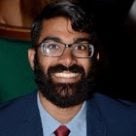 Cybersecurity was named by 67% of respondents as one of the three risk types that would increase the most in importance, including 40% who named it as number one — far more than any other risk type. (Photo: Shutterstock)
Cybersecurity was named by 67% of respondents as one of the three risk types that would increase the most in importance, including 40% who named it as number one — far more than any other risk type. (Photo: Shutterstock)
Risk management in today's global marketplace is much like being a juggler — except the objects being juggled continue to increase with no end in sight. Even when a groove is established and everything is seemingly under control, something can spring up and cause the objects to come crashing down.
Recommended For You
Want to continue reading?
Become a Free PropertyCasualty360 Digital Reader
Your access to unlimited PropertyCasualty360 content isn’t changing.
Once you are an ALM digital member, you’ll receive:
- Breaking insurance news and analysis, on-site and via our newsletters and custom alerts
- Weekly Insurance Speak podcast featuring exclusive interviews with industry leaders
- Educational webcasts, white papers, and ebooks from industry thought leaders
- Critical converage of the employee benefits and financial advisory markets on our other ALM sites, BenefitsPRO and ThinkAdvisor
Already have an account? Sign In Now


